Jake Stewart
Dartmouth College Ski Team
jakeskis@aol.com
CURATOR’S NOTES – The Al Merrill piece elicited a backstory from Jake Stewart that I wanted to share. And this in turn prompted questions about Ford Sayre which is another story in and of itself. Both are below.
I was interested in your Dec. 27th story. Since I grew up in Hanover, I was competing against Lebanon through 1951. In the photograph I recognize Gene Boisvert behind Al. We were friends long after high school and college and I worked with him professionally, as well. (Don Cutter and then Colby Bent were our coaches.)
Many ski jumpers’ careers began at an early age by being hooked by the thrill of being airborne on small jumps. My two older brothers, Colin and Andy Stewart, both skied 4 events and liked jumping in particular. It began with small snow jumps on the Hanover, NH golf course in the 1930’s. (Their techniques improved with experience and larger hills.) I followed them, and in sixth grade both Ralph Miller and I took our first jumps off the Dartmouth ski jump.
It is my contention that ski jumping ability is beneficial to racers also competing in downhill. They have the advantage of being comfortable in the air, and by knowing how to prejump, they can be faster over bumps. Downhill courses usually have natural bumps and often also have built in bumps to make the race more challenging.
My brother Colin went on to do 4 events at Dartmouth, and in 1948 was on the U.S. Olympic Alpine team. In 1950, at the first National Intercollegiate Ski Championships in Arapahoe, CO, Colin won the downhill race by 5 seconds. In a picture of that race he is seen getting a “bit of air.”
In the early 1960’s when I was coaching skiing at UVM, I was appointed President of the Eastern Intercollegiate Ski Association. In that capacity, and at carnivals, I had the pleasure of being associated with and learning from other Eastern coaches that I considered to be some of the best. Al Merrill of Dartmouth, Ralph Townsend of Williams, and “Bobo” Sheehan of Middlebury. We had all been 4 event skiers and were concerned about the rumblings of eliminating jumping from collegiate competition. Jumping was the last carnival event, and usually attracted a big crowd. It was often exciting and frequently determined the winning carnival team.
I was sorry when what we had feared finally happened and eventually the jump trestles were also taken down. I have been delighted at the recent resurgence of the sport and especially that women are now participating in the fun.
FORD SAYRE SKI CLUB HISTORY (from the Ford Sayre Ski Club website)
Though born in Glen Ridge, New Jersey, Ford K. Sayre was a New Englander at heart. He learned to ski at Dartmouth College as an undergraduate, and even then he encouraged friends to take up the infant sport.
Ford’s love of the outdoors and the spirit of New England kept him in New Hampshire after graduation, and he continued his close association with the College through the Dartmouth Outing Club. It was on a joint Dartmouth-Smith College trip to Mt. Moosilauke organized by him, that he met his future wife, Peggy.
During the depression years, Ford Sayre worked at the Hanover Inn. It occurred to him that he might stimulate the Inn’s winter business by making ski lessons available to children of guests. Peggy Sayre, now an accomplished skier in her own right, joined Ford in the early ski school venture.
At the same time, Ford recognized that many local children were unable to learn to ski or to afford the simple equipment of the day. He decided to set up a ski school for rural children and did so at a hill in Hanover Center, New Hampshire.
Ford Sayre enlisted in the Army Air Corps in August 1942. His learn-to-ski program continued under Peggy Sayre’s supervision, with frequent advice and encouragement from Ford in his letters home from his Spokane, Washington base. On July 23, 1944, at age 34, he was killed in a crash during a War Bond Drive exhibition.
After the war, through the efforts of Peggy Sayre and other local organizers, the Ford Sayre Memorial Ski School was formed. In the winter of 1945-46, over hundreds of children joined the classes. In 1950, a variety of children’s skiing organizations in the Hanover area merged their activities into the Ford K. Sayre Memorial Ski Council.
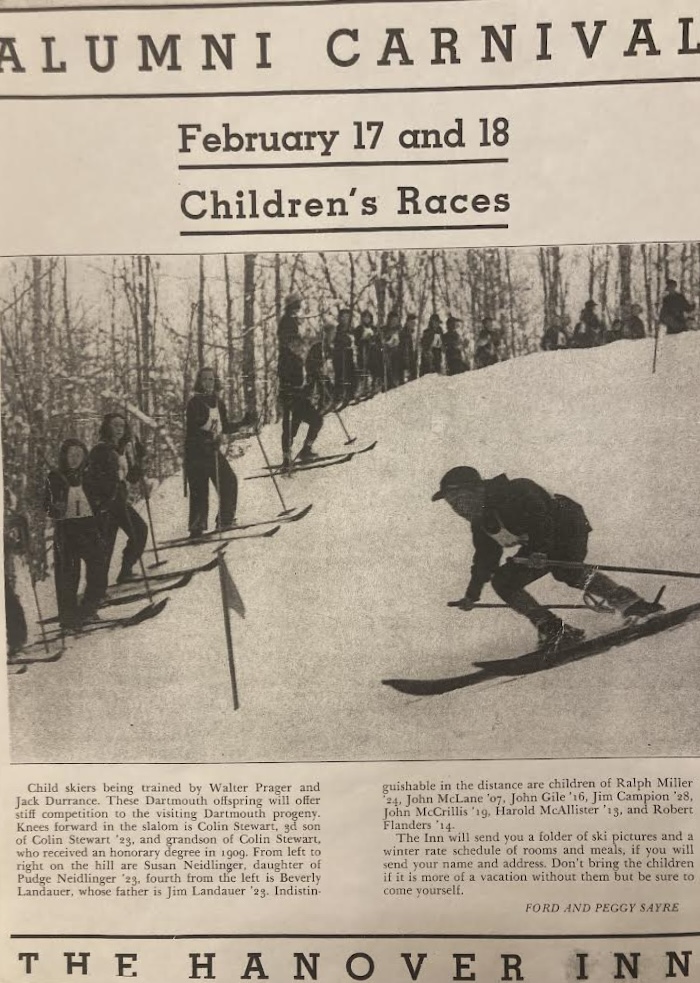
The Ford Sayre Ski Program, based in Hanover, has produced many great skiers across all disciplines. Details of the program’s history are shared below but it all began with Ford & Peggy Sayre offering ski lessons (and an annual Dartmouth Alumni Carnival) through the Hanover Inn. The invitation above, circa 1942, shows Jake Stewart (not his brother, Colin) in the previous year’s Alumni Carnival.
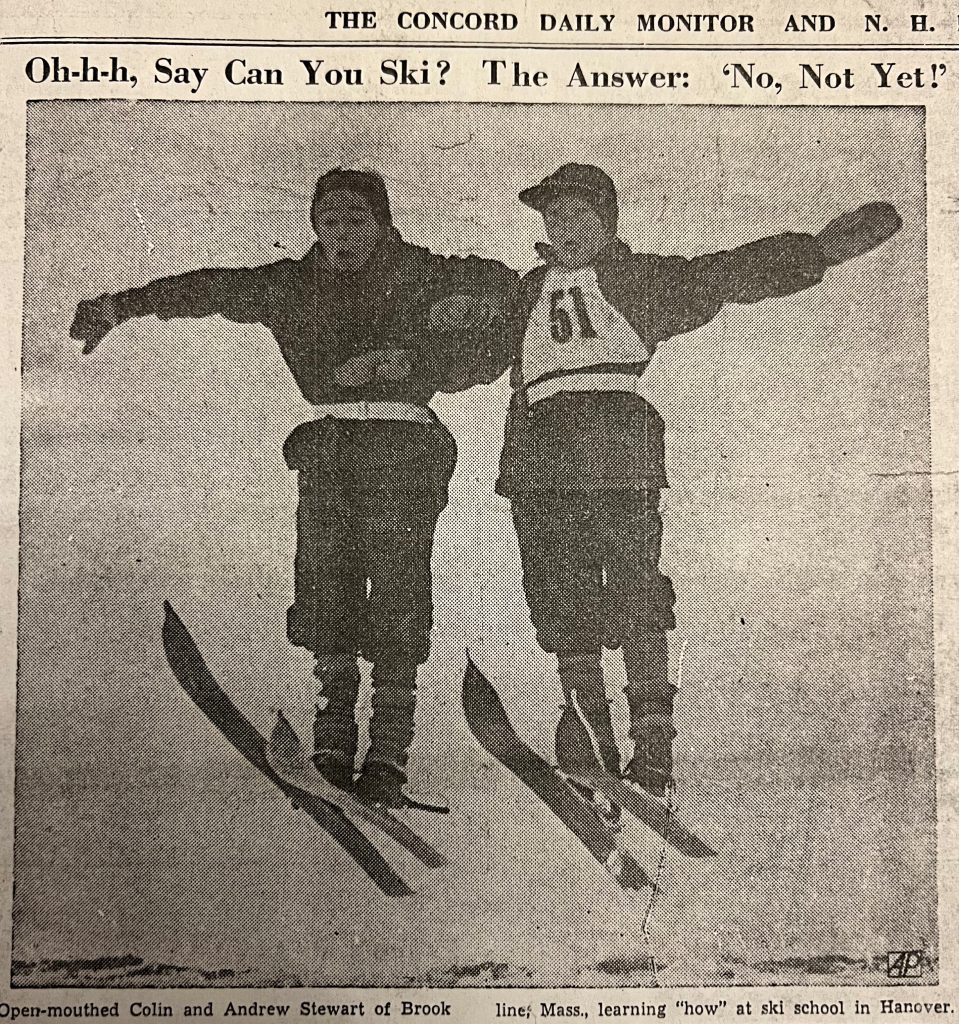
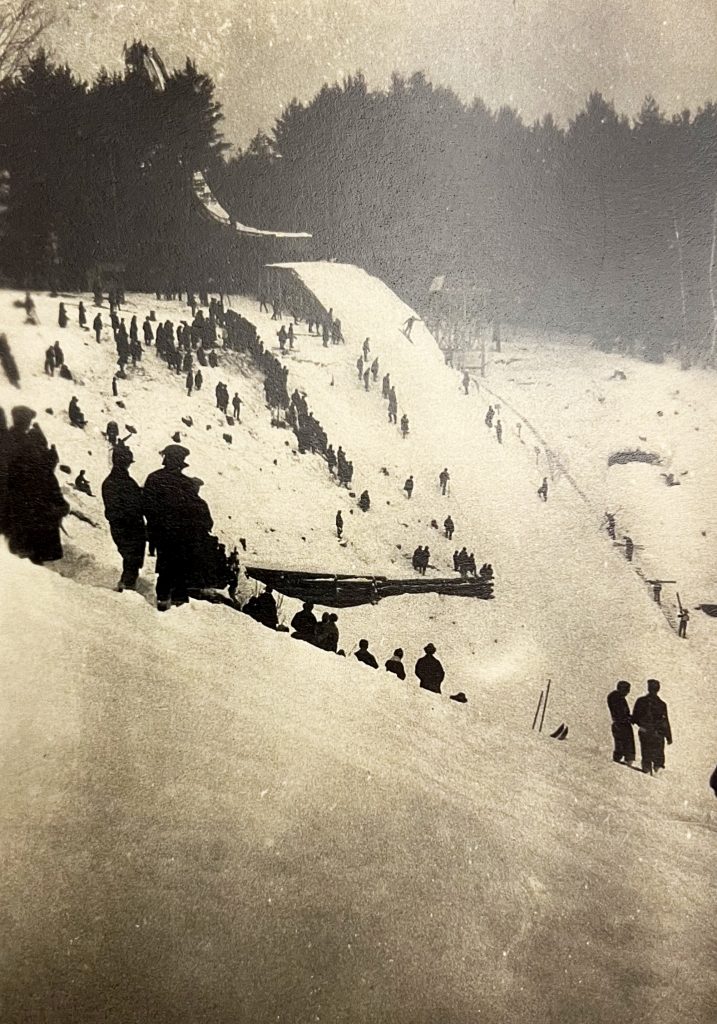
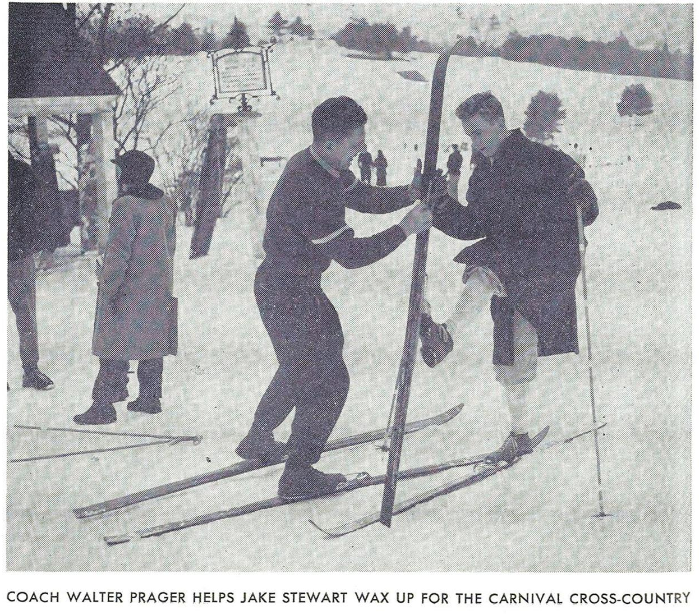
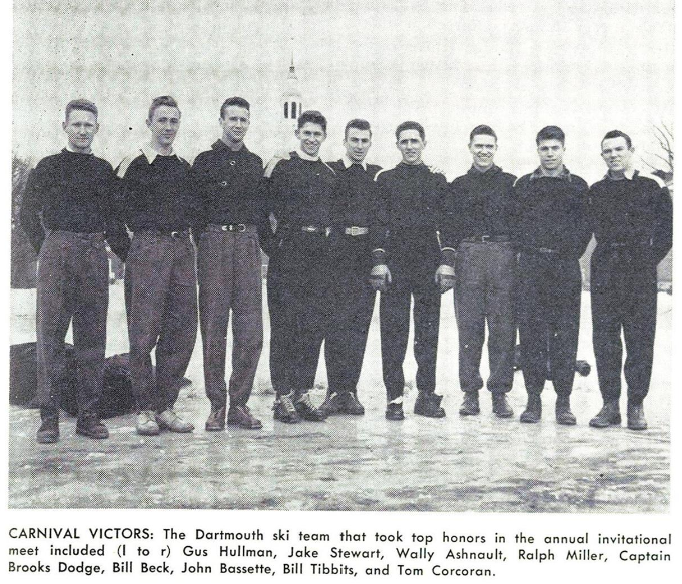

2 Comments
Great hearing this, Jake! Love that picture of Colin and Andy.
That’s quite a crew in the picture above! National Champions, National Team members, World Speed record holder, and Olympians. It’s interesting that we think of metaphors in terms such as long-lasting ripples… Individual accomplishments take place in deeeeep waters which tend to make descriptions of them seem like ripples. Al Merrill’s contributions to and achievements in improving athletes’ performance levels and USA Nordic ski programs’ effectiveness were tsunamic from whatever perspective they might be viewed. Al had the knowledge, ability, and willingness to fill any spot in the chain at anytime he was needed… as well as being creative and innovative to introduce and implement new links that he saw were needed along the way.
Gotta’ LOVE that picture of Vale de Temp in the 1920s. Sure miss seeing it these days.